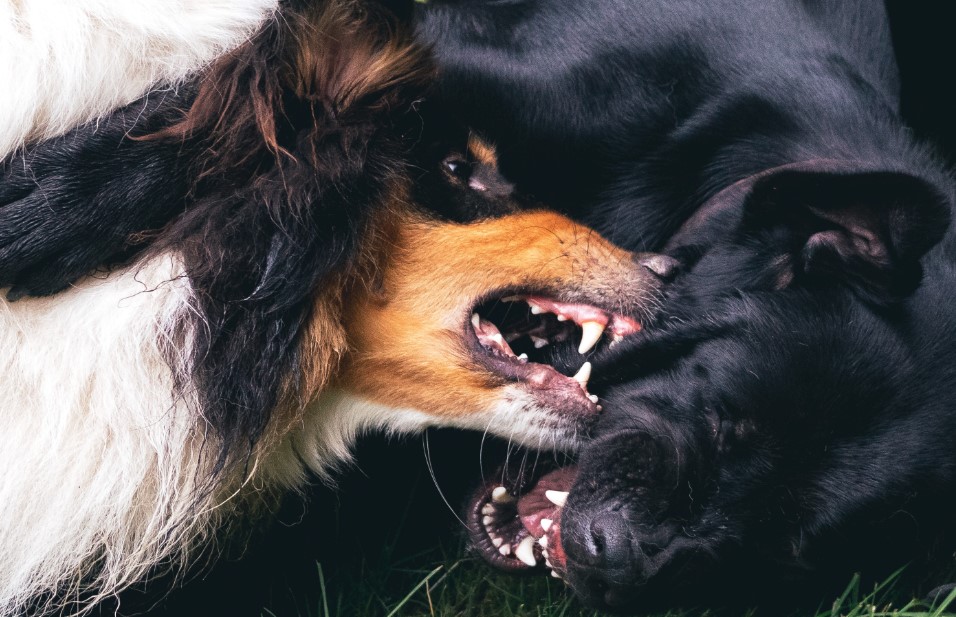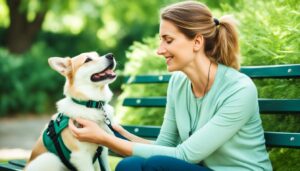Hi there, fellow dog lovers! I’m Mel, your go-to expert from All For Furry Friends here on the beautiful Gold Coast. Like many of you, I know that walking our furry friends is one of the most joyful and relaxing parts of our day. However, it’s not without its challenges, and one of the most serious is the risk of a dog fight.
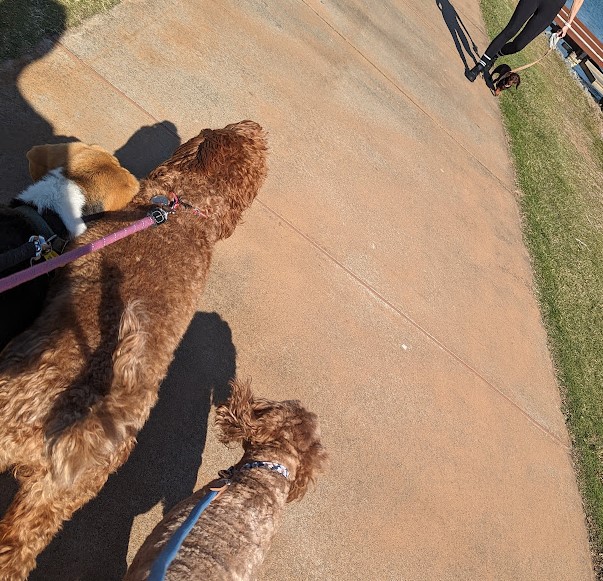
Through my years of experience walking all kinds of dogs – from sprightly puppies to dignified seniors – I’ve seen my fair share of scuffles. That’s why I’m here to share some essential advice on how to prevent a dog fight while you’re out enjoying a stroll with your four-legged companion.
Whether you’re walking an old dog who’s seen it all or a curious pup who’s still figuring out the world, the risk of an altercation with another dog can be a real concern. With the right knowledge and preparation, though, you can drastically reduce this risk.
In this article, we’ll delve into understanding dog behavior, preparing for your walk, and strategies to safely navigate the canine social sphere. I’ll share with you tips on reading aggressive signs from afar, the importance of holding your dog tight at the right moments, and why it’s sometimes best to walk in the opposite direction. We’ll also discuss why it’s crucial not to let dogs get too close without a proper greeting and how listening to what the other dog’s owner is saying can be a lifesaver.
So, grab your leash and your favorite four-legged pal, and let’s get into the nitty-gritty of keeping our dogs safe, happy, and fight-free during our walks.
Understanding Dog Behavior
Body Language Cues
When you’re walking your beloved pooch, observing the body language of other dogs from afar is vital. A dog with a stiffened posture, raised hackles, a fixed gaze, or exposed teeth are broadcasting loud and clear that they’re not in the mood for company. It’s these subtle yet clear signs that I’ve learned to spot early, helping me steer clear of potential confrontations.
Vocal Cues
Barking can be friendly, but it can also signal distress or aggression. A low-pitched growl, a bark with raised hair on the back, or even an intense silence can indicate an aggressive dog. Over time, I’ve honed my ear to these sounds, allowing me to gauge a dog’s mood from their vocalizations.
Walking an Old Dog with Caution
Older dogs might not have the patience for a boisterous puppy or the stamina to deal with an assertive strange dog. I’ve walked many senior dogs and have learned that they often require a gentle approach and a quick intervention if things go south. They might be set in their ways and less tolerant, so knowing when to give them space is key.
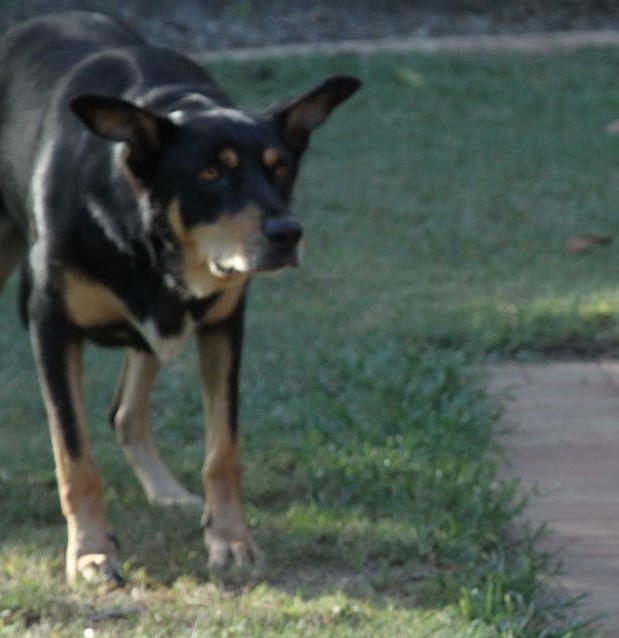
Recognizing the Signs of Anxiety or Fear in Your Dog
It’s not just about reading other unfamiliar dogs. Knowing your own dog’s signals of discomfort is just as crucial. Are they tucking their tail? Are their ears pinned back? Do they seem to be trying to make themselves small? These are signs I always tell my clients to watch for. A fearful dog can quickly become a defensive dog if they feels pressured, so recognizing these signs early can prevent a negative encounter from escalating.
Preparation Before the Walk
The Importance of a Reliable Recall
One of the most crucial commands that every dog owner should teach their pet is a reliable recall. It’s a safety net that can pull your dog out of a potentially dangerous situation. I always practice recall with my client’s dogs in a controlled environment before we hit the busy streets or dog parks. It’s the command that could make all the difference when faced with an unexpected encounter.
Practicing “Leave It” and “Stay”
“Leave it” is another indispensable command that can prevent your dog from engaging with an aggressive dog. It tells them to ignore whatever is intriguing them, be it another dog, a discarded snack, or a tempting scent. “Stay” is equally important; it can stop your dog in their tracks, preventing them from wandering into harm’s way. I incorporate these commands into our daily walks, turning them into second nature for the dogs I handle.
Choosing the Right Leash and Harness
Not all leashes and harnesses are created equal. I recommend a sturdy, comfortable harness and a strong leash that gives you control without harming your dog. For the older dogs under my care, I suggest harnesses that offer support without putting undue pressure on their aging bodies. A proper leash and harness can help you hold your dog tight and secure if you need to make a quick exit from a dicey situation.
The Role of Muzzles and Safety Devices
In some cases, particularly for dogs with a history of aggression or extreme fear, a muzzle may be a responsible choice. It’s not a punishment; it’s a precaution. I always advise my clients to introduce the muzzle gently and positively, ensuring the dog associates it with good experiences. Safety devices such as reflective vests, LED collars, and even a simple bell can help make your dog more visible and audible, which is particularly useful when walking an old dog who might not be as aware of its surroundings.
Strategies for Walking Your Dog Safely
Selecting Safe and Appropriate Routes
As a seasoned dog walker on the Gold Coast, I’ve come to know which paths offer a tranquil stroll and which are bustling with fighting dogs. I always advise my fellow walkers to choose routes that are well-suited to their dog’s temperament. If your dog is old or easily overwhelmed, the quieter paths are your friends. And, of course, keeping up to date with local dog-walking groups can give you a heads-up on which areas to avoid due to high dog traffic or recent aggressive incidents.
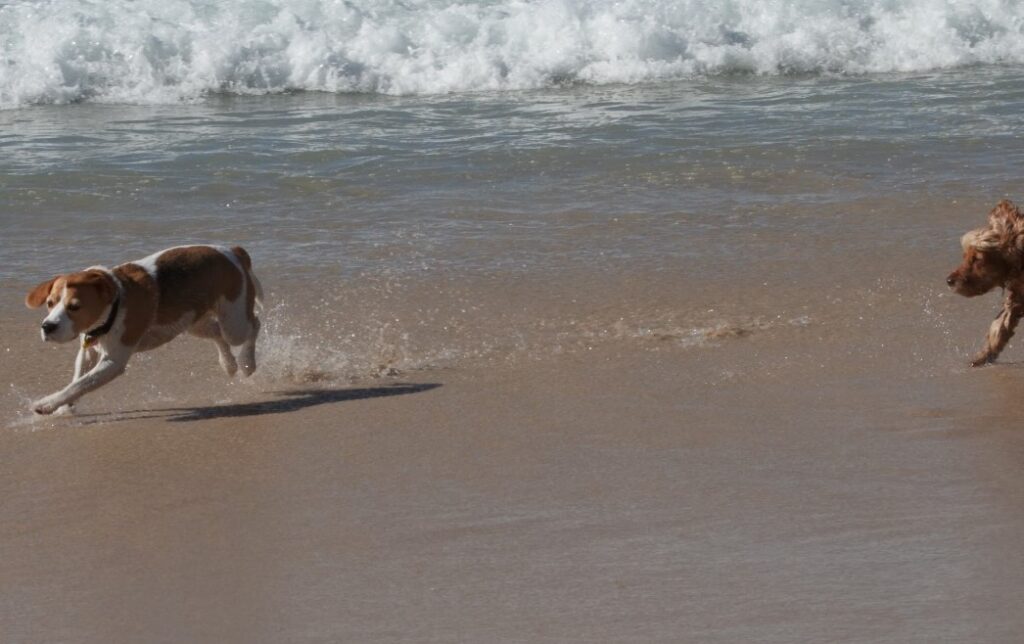
Times to Avoid High Dog Traffic
Timing is everything. Walking during off-peak hours can significantly reduce the chances of running into other dog and potential conflicts. Early mornings or later evenings are typically quieter times. However, this can vary depending on your location, so it’s wise to observe the patterns in your area and plan accordingly.
When to Cross the Street
One simple yet effective strategy I use is crossing the street when I see another dog approaching, especially if I notice any signs of aggression or if I’m walking an old dog that might not cope well with an assertive stranger. It’s a non-confrontational way to avoid a possible threat and has become a second nature move for me on my walks.
Utilizing Barriers and Natural Obstacles
Sometimes, an immediate street crossing isn’t possible. That’s when I make use of barriers like parked cars, hedges, or even benches to put a safe distance between my dog and the other. These natural obstacles can act as a buffer zone, giving you more control over the situation.
The Encounter: Preventing a Dog Fight While Walking
It’s important to have a firm but gentle grip on your leash. I practice the technique of leash shortening without yanking. This involves wrapping the leash around my hand to bring my dog closer to me, ensuring I can quickly pull them away from trouble if needed.
Body blocking is a method where I position myself between my dog and the other dog, creating a visual barrier. It sends a clear message to both dogs that interaction isn’t welcome at this time. It’s a peaceful way to assert control and protect your dog.
Recognizing when a situation could escalate and deciding to walk away is not an act of defeat—it’s a strategic retreat. This maneuver can defuse potential conflicts and is especially useful when dealing with an unpredictable or aggressive dog.
It’s crucial to remain calm and assertive during a retreat. Dogs can sense our anxiety, and if we panic, they might become more stressed or defensive. A composed demeanor will help keep your dog calm as well.
Avoiding Close Encounters with Other Dogs
Not every dog wants to say hello, and that’s okay. It’s essential to read the situation: Is the other dog pulling towards you with friendly body language, or are they barking aggressively? I’ve learned to trust my instincts and steer clear if I’m uncertain.
Gold Coast has specific on-leash and off-leash areas, and respecting these boundaries is critical for preventing dogs fight. Off-leash areas can be great for socialization under the right circumstances, but if your dog isn’t comfortable with these interactions, it’s best to keep them on their leash and stick to the appropriate zones.
Conclusion
As I wrap up my thoughts on preventing scenes of two fighting dogs during walks in a dog park, I reflect on the countless strolls I’ve taken with various four-legged companions along the Gold Coast. Each walk has reinforced the importance of understanding canine behavior, being prepared before leaving the house and employing smart, preventative strategies on our outings.
At All For Furry Friends my experiences have taught me that every dog is unique, with its own set of preferences and triggers. Walking an old dog has its set of challenges, just as walking a boisterous puppy does. But the goal remains the same: to ensure a safe, enjoyable, and fight-free experience for both the dog and the walker.
Prevention is always better than intervention, and by reading signs of aggression from a distance, holding our dogs tight when needed, walking in the opposite direction if we anticipate trouble, and respecting the other owners and their pets, we set ourselves up for success.

